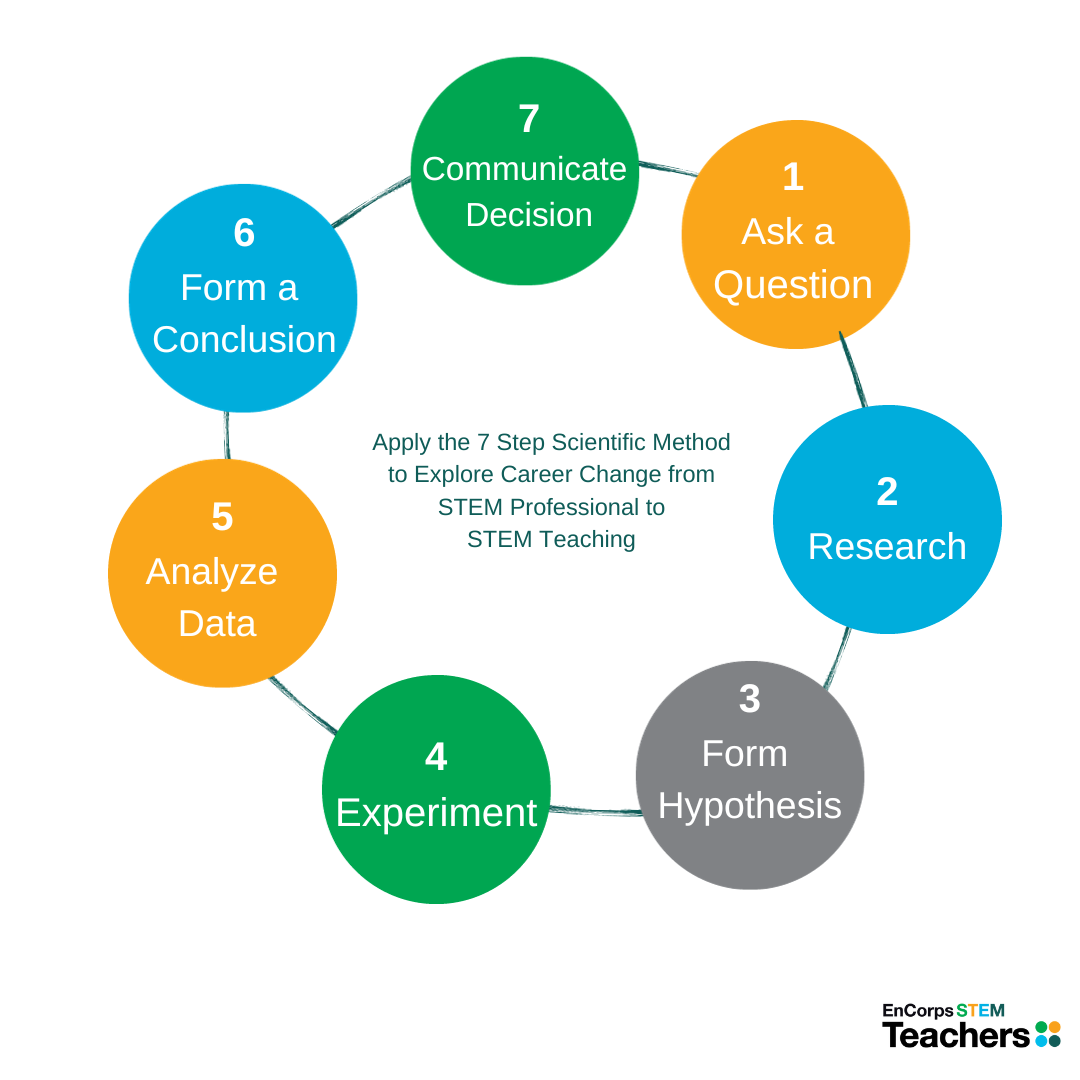
Have you ever wondered what it would be like to do a career 180? Does your work still bring you meaning? As a scientist or engineer, are you looking to solve a new problem?
Yes, career changes can be daunting. Afterall, you are leaving the devil you know for the devil you don’t. What if I told you that you can test the unknown—also known as the ‘experiment’ step—before untethering yourself from what is familiar?
In the following post, you will learn how to apply the scientific method to plan, test and evaluate if a career change from STEM professional to STEM teaching is right for you and discover how EnCorps can be part of your exploration.
Step 1: Question
Teaching is rewarding. You have the opportunity to touch the lives of young people, potentially changing their life trajectory by sharing your industry STEM experience to help students marry theory with practice. You can be both educator and mentor as you ignite a passion for STEM in your students. Ask yourself: Why is STEM teaching right for me?
Step 2: Research
There are many decisions to make as you explore becoming a STEM teacher. While you need to answer logistical questions—What subject do I want to teach? What grade do I prefer? Do I want to teach in a high-needs school?—you also need to do a bit of introspection. Ask yourself:
- Do I enjoy explaining scientific concepts to others?
- Do I like to mentor people?
- What do I enjoy about spending time with 10 to 18 year olds?
- What would I ask someone who became a STEM teacher?
- What will be the impact or a career change have on my family?
Step 3: Hypothesis
Writing a hypothesis will be personal to each career-changing STEM professional. Use the following sentence structure as a guide:
- If I try out being a STEM teacher, I will better understand what motivates me and what potential impact I can make on the community.
Step 4: Experiment
Wait. How can you test out teaching without becoming a teacher? This is where EnCorps comes in.
While you maintain your full-time employment, you can volunteer in an EnCorps partner school, teaching middle or high schoolers science or math, for two hours per week for 10 consecutive weeks. Your volunteer hours will be set in collaboration with your mentor teacher.
As a volunteer guest teacher you will work with your mentor teacher to:
- Work directly with students in an academic capacity;
- Help connect STEM concepts to real work science or engineering problems;
- Help students believe that a STEM career is right for them;
- Prepare the classroom such as setting-up a science experiments;
- Plan and lead classroom instruction with the support of your mentor teacher.
Step 5: Data Analysis
As a scientist, you know that failure or unexpected negative results are part of any experiment. The goal of the 10 week volunteer opportunity is to test out a career change before you fully commit. It’s ok to decide that teaching is not for you.
So now, it’s time to be honest. Based on your 10 week volunteer guest teaching experience, was your hypothesis true?: If I try out being a STEM teacher, I will better understand what motivates me and what potential impact I can make on the community.
Step 6: Conclusion
Now that you’ve analyzed your experience you’re ready to answer your initial question: Why is STEM teaching right for me? If the answer is yes, go to Step 7.
Step 7: Communication
Ready to Explore STEM Teaching? Let’s chat! Join us for an information session or book a 15 minute call with an EnCorps Team Member to discuss next steps.
